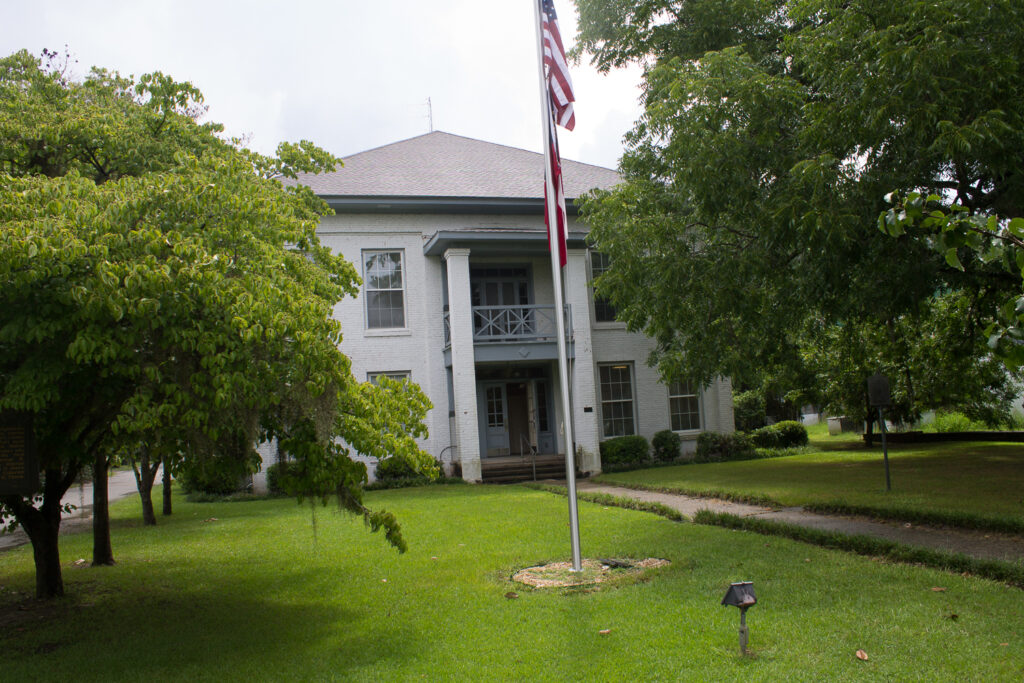Clay County, in southwest Georgia, was once on the western frontier of the United States. Named for Senator Henry Clay of Kentucky, the county was created in 1854 from parts of Randolph and Early counties.
The county seat, Fort Gaines, was established in 1816 around a fort overlooking the Chattahoochee River. The fort was built by General Edmund Pendleton Gaines at the direction of General Andrew Jackson to protect settlers during the Creek Indian wars. The site also served as a Confederate fort in 1863. The point where nearby Cemochechobee Creek meets the Chattahoochee River was at one time a defining boundary between the United States and Indian Territory.
A legend endures concerning General John Dill, one of the prominent leaders during the Creek Indian wars. It seems that during a raid, some Creeks captured a Mrs. Stuart and killed her husband. They discarded as worthless the paper money they found. Mrs. Stuart gathered the money and pinned it to her petticoats during her captivity. When finally rescued, she was wealthy, thanks to her resourcefulness. She was introduced to and later married General Dill. The elegant house they built in Fort Gaines still stands.
Until the development of the railroad in the 1850s, Fort Gaines was a hub of commerce and river traffic for merchants in Georgia and Alabama. It was known as the “Queen City of the Chattahoochee.”
The Walter F. George Lock and Dam, home to the second highest lock east of the Mississippi, was completed by the U.S. Army Corps of Engineers in 1963. Lake George, a 45,180-acre lake created by the dam, is used for fishing, boating, and other recreational activities. The George T. Bagby State Park and Lodge is located on the lake a few miles north of Fort Gaines.
The Fort Gaines area is home to an unusually rich variety of plant life. Plant species such as Carolina rhododendron, found mainly in the north Georgia mountains, mix with Florida’s maidenhair fern. Around the bluff area are many endangered plant species, including Trillium reliquum, the rarest of the sessile-flowered species of trillium known in the world. In 1979 the Fort Gaines Natural Phenomena Authority was formed, in part to establish and promote these natural assets.

Frontier Village in Fort Gaines is an unusual collection of log structures moved from locations throughout the county. It is located on the bluff 130 feet above the Chattahoochee. The entire city is on the National Register of Historic Places. Two private history museums are available for tours by appointment only.
According to the 2020 U.S. census, Clay County’s population is 2,848, a decrease from the 2010 population of 3,183.










